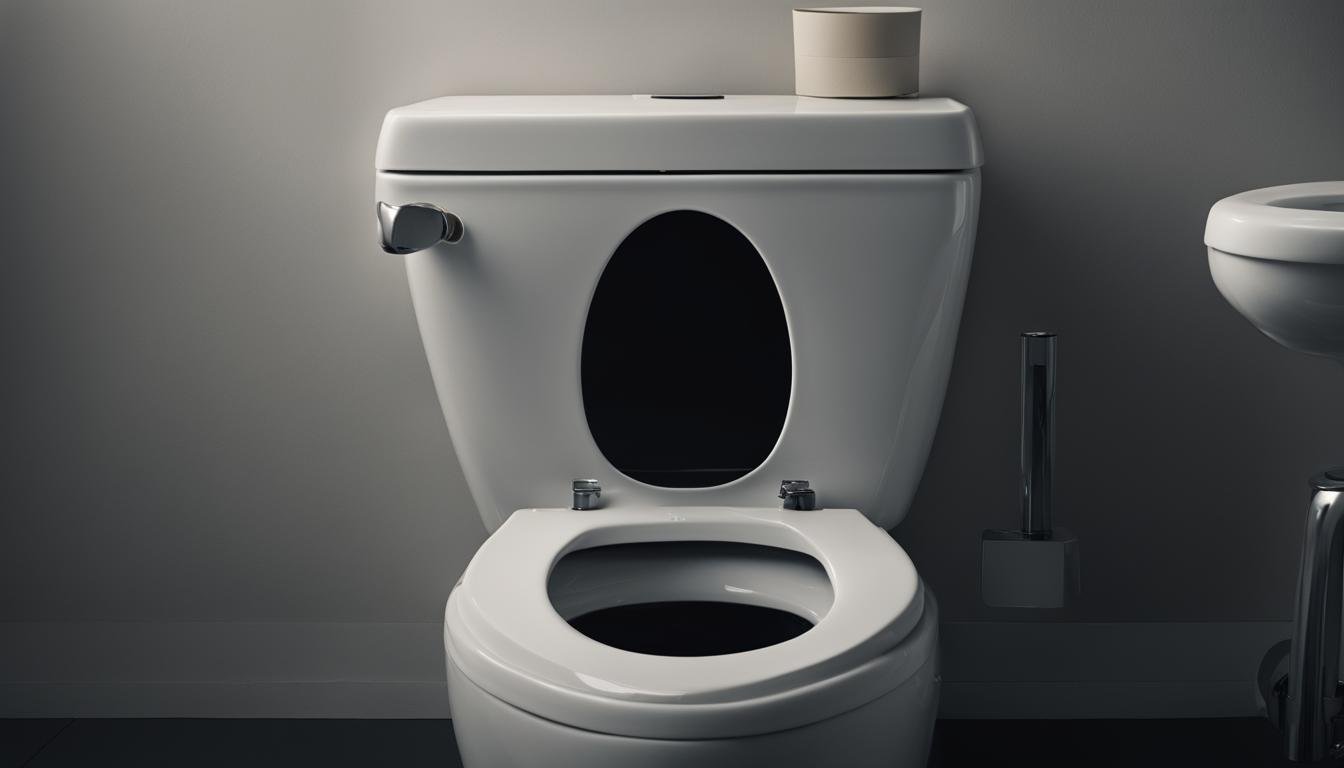If you’re experiencing trouble with your toilet tank not filling up, you’re not alone. This common issue can be frustrating, but fortunately, there are solutions. Let’s explore the possible causes and troubleshooting steps to get your toilet tank back to its normal functioning.
Key Takeaways:
- A misadjusted fill valve or float is a common cause of a toilet tank not filling up completely.
- Worn-out toilet flappers can lead to water leakage and insufficient water in the tank.
- Damage to the overflow tube can result in continuous water leakage, preventing the tank from filling up.
- Faulty trip levers, cracked/leaking toilets, partially closed water shut-off valves, and low water pressure can also cause filling issues.
- Adjusting the fill valve, replacing the flapper, fixing the overflow tube, and addressing other underlying issues can help resolve the problem.
Potential Causes of a Toilet Tank Not Filling Up
If you’re facing the issue of a toilet tank not filling up, it’s important to understand the potential causes behind this problem. By identifying the specific issue, you can take the necessary steps to troubleshoot and fix the problem, ensuring that your toilet functions properly.
One common cause for a toilet tank not filling up completely is a misadjusted fill valve or float. When these components are not properly positioned, the fill valve can close before the tank is fully filled, resulting in inadequate water levels. Similarly, a worn-out toilet flapper can lead to water leakage and insufficient filling of the tank. This can be resolved by checking and replacing the flapper if necessary.
Another potential cause is a damaged overflow tube. When the overflow tube is compromised, it can cause continuous water leakage, preventing the tank from filling up properly. In such cases, replacing the overflow tube is necessary to address the issue. Additionally, a faulty trip lever or a cracked/leaking toilet can also result in a toilet tank not filling up as it should.
Lastly, it’s important to consider external factors such as a partially closed water shut-off valve or low water pressure in your home. A partially closed valve restricts the flow of water into the tank, leading to incomplete filling. Similarly, low water pressure can affect the filling process. Checking and fully opening the water shut-off valve or addressing any underlying issues with low water pressure can help resolve the problem.
By understanding the potential causes of a toilet tank not filling up, you can begin the troubleshooting process and work towards finding a suitable solution. In the next section, we will explore various troubleshooting steps and solutions to help you fix this problem and ensure that your toilet tank fills up properly after each flush.
Troubleshooting and Solutions for a Toilet Tank Not Filling Up
If you’re dealing with the frustrating issue of a toilet tank not filling up, there are several simple steps you can take to troubleshoot and potentially fix the problem. By following these solutions, you’ll be able to address the issue and restore your toilet’s proper functionality.
Adjust the Fill Valve or Float
Start by checking the position of the fill valve or float in your toilet tank. Sometimes, these components can become misadjusted, causing the valve to close prematurely. By ensuring that the fill valve or float is properly positioned, you can allow more water to enter the tank and resolve the filling problem.
Check and Replace the Toilet Flapper
A worn-out toilet flapper can prevent the tank from filling up properly. Inspect the flapper for any signs of damage or wear, such as cracks or decay. If necessary, replace the flapper to ensure a tight seal and prevent water leakage, which can hinder the tank filling process.
Address Other Potential Issues
Inspect the overflow tube for any damage or blockages. If the tube is compromised, replacement is necessary to prevent continuous water leakage. Additionally, if you notice a faulty trip lever, a cracked or leaking toilet, or partially closed water shut-off valve, addressing these issues can also contribute to resolving the tank filling problem. Finally, check if your home has low water pressure, as this can affect the filling process. Consider fully opening the water shut-off valve or consulting a professional plumber if needed.
By implementing these troubleshooting steps, you can identify and resolve the specific cause of your toilet tank not filling up. Remember, if you’re unsure or unable to fix the problem yourself, don’t hesitate to seek the assistance of a professional plumber for proper adjustment and repair.
FAQ
Why is my toilet tank not filling up?
There could be several potential reasons behind this issue, including a misadjusted fill valve or float, a worn-out toilet flapper, a damaged overflow tube, a faulty trip lever, a cracked or leaking toilet, a partially closed water shut-off valve, or low water pressure in your home.
What is the most common reason for a toilet tank not filling up completely?
The most common reason is a misadjusted fill valve or float, which can cause the valve to close before the tank is fully filled.
How can I troubleshoot and fix a toilet tank not filling up?
You can start by adjusting the fill valve or float to ensure they are properly positioned. Checking and replacing a worn-out toilet flapper can also resolve the issue. If the overflow tube is damaged, replacing it is necessary to stop water leakage. Repairing or replacing a faulty trip lever, fixing a cracked or leaking toilet, fully opening the water shut-off valve, or addressing low water pressure can also help resolve the problem. Consulting a professional plumber may be advisable in certain cases to ensure proper adjustment and repair.

